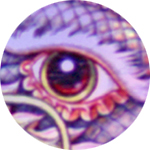Well, this is the first I've heard of it or anything being attributed to Zhuanyun. Wonder if Sha0lin1's shifu also told a story to it, or just named her as the creator.
As my post #2 states, the meaning and reason for the two names Chaoyang and Zhaoyang (Facing/Exposed to the Sun & Bright Sun) have to do with their fight strategies.
Btw, the character 昭 can only be pronounced 'zhao', but although the character 朝 as you said, Gene, can be pronounced as either 'chao' or 'zhao', as I have seen it is always pronounced 'chao' with this particular set. So the meaning is 'facing' or 'exposed to', rather than 'morning'.
Although, I've also heard it explained as 'morning sun' referring to a certain posture in the set with arms stretching above the head, as if one just woke up. The posture mimics one of the 18 Arhats, Panthaka, who is always depicted in this posture as he was just coming out of meditation on a mountain facing the morning sun. Well, there you go.. 'facing the morning sun'. It could be either 'facing' or 'morning'. But anyway, it's always pronounced 'chao' with this set, for 'facing the sun'.
This makes me yawn:




 Reply With Quote
Reply With Quote




